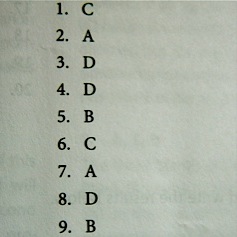
Having been a private tutor for many GMAT test takers, I consider Critical Reasoning to be the section of the test that gives students the most trouble.
However, I have found that my students improve quickly in this section by following a very simple method. Namely, students should answer Critical Reasoning questions following a three-step hypothesis-driven approach.
I will explain this process using the following simple Critical Reasoning question, typical of what you will see on the GMAT:
Automation, the trademark of a modern economy, is essential to maximizing a country's economic production while minimizing its costs. Health care executives want to increase revenues while reducing costs. Consequently, they propose significantly greater automation of health care. Yet, this should be rejected. Radical automation of health care would cause patients to lose trust in the system as the health care they would receive would lack the in-person care that studies show patients desire.
Which of the following expresses the main point of the argument?
A) Health care should not be heavily automated
B) Patients desire customized in-person care
C) Trends in the general economy do not apply to the health care industry
D) Health care executives are becoming too greedy
E) Due to economic forces, automation of health care is eventually inevitable
Step One: Read the Question Being Asked First
This oft-cited standardized test trick is especially helpful with Critical Reasoning questions. Before reading the full text of the prompt, dart your eyes immediately to the question just before the answer choices. Most of the time, you will be asked to strengthen/weaken a conclusion, point out assumptions upon which the conclusion is based, or make a conclusion yourself, based on the information in the prompt.
In our simple example, the student should first look to the sentence “Which of the following expresses the main point of the argument?” Turning to the question first, the student can now read the full text of the prompt with an understanding of what the test expects. This first step lays the framework for the GMAT test taker to develop a hypothesis while reading the prompt. In this case, the student will be formulating a summary of the main paragraph as she reads it, ultimately saving precious time while improving accuracy.
Step Two: Come Up With Hypothetical Answers (In Your Own Words)
While reading the prompt, the student should begin answering the question without the help of answer choices. Often, pretending to be a teacher – or better yet, an investor analyzing a business plan – allows the student to critique the points made in the paragraph and understand why the argument does or does not succeed. Through this lens, the student/teacher/investor can enunciate the missing points, for example, that she would like to see in the argument. What additional information would help the writer best convey his point? What logic may seem questionable, and how can another piece of information disprove it? By answering these questions before looking at the choices available, students can answer Critical Reasoning problems through their own logic rather than through process of elimination.
In our example, while reading the paragraph, the student continuously refines the main point of the paragraph, in her own words. At first, the paragraph seems to indicate that automation should be applied to the healthcare industry. However, halfway through the paragraph, we are met with a word to which every standardized test taker must pay careful attention – “YET.” This turn indicates that the author is opposed to the automation of healthcare, despite the will of health care executives. He then supports this point with some evidence, indicating that the “main point of the argument” should be something along the lines of “The author doesn’t believe in automation for health care industry.
Step Three: Test Your Hypotheses With the Options
This hypothesis-driven structure frontloads the stress of approaching a Critical Reasoning problem, and makes the final step the easiest step. Once the student has a good idea of how the answer choice will sound, she needs only to find it out of five potential choices. In our example, we find it right away: “A.) Health care should not be heavily automated.” Quickly looking over the other four choices, we find no options with the same general sentiment. Therefore, the student can check A and move on, preserving the clock.
This method is often unnatural to the GMAT test taker at first, but it almost always works.
Students must get comfortable with answering a question before looking at the answer choices, which is atypical for most standardized test questions. However, once trained to take a hypothesis-driven approach, results in the Critical Reasoning session begin to improve rapidly, as does the time it takes to answer such a question confidently. Thus, this structure not only improves scores in Critical Reasoning, but saves time for other sections such as Reading Comprehension.
Comments